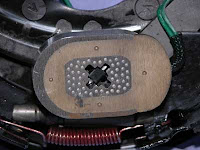Been a long time since I've been on, obviously working too much.
This is issue goes all the way back to last August when we were going to one of my wife's art functions in Montana. On the way we found our suspension was trashed. Long story short we had to replace both axels and springs which also includes all new wheels and brakes.
When end leaving the repair facility I tested by brakes and found weak braking. They went around checked adjustment and all was in spec. Drove around some more still weak. Check again, all in spec. Finally they said thing wow old improve after a few hundred miles......well after about 1000 mile no change.
Finally started looking king at the voltage at the breaks and we only get 9.5V. So working backwards I have 13.5V at my receptacle on the truck. Checking inside the junction box where the plug wire connects to the wires that go to the trailer I only have 10.5V which leads me to believe the plug is bad. I have already used a file to clean the plug connections and made no difference.
I also wonder why there would be a one volt drop from the junction box to the breaks, but I don't think that is going to be a problem.
Any suggestions
This is issue goes all the way back to last August when we were going to one of my wife's art functions in Montana. On the way we found our suspension was trashed. Long story short we had to replace both axels and springs which also includes all new wheels and brakes.
When end leaving the repair facility I tested by brakes and found weak braking. They went around checked adjustment and all was in spec. Drove around some more still weak. Check again, all in spec. Finally they said thing wow old improve after a few hundred miles......well after about 1000 mile no change.
Finally started looking king at the voltage at the breaks and we only get 9.5V. So working backwards I have 13.5V at my receptacle on the truck. Checking inside the junction box where the plug wire connects to the wires that go to the trailer I only have 10.5V which leads me to believe the plug is bad. I have already used a file to clean the plug connections and made no difference.
I also wonder why there would be a one volt drop from the junction box to the breaks, but I don't think that is going to be a problem.
Any suggestions

